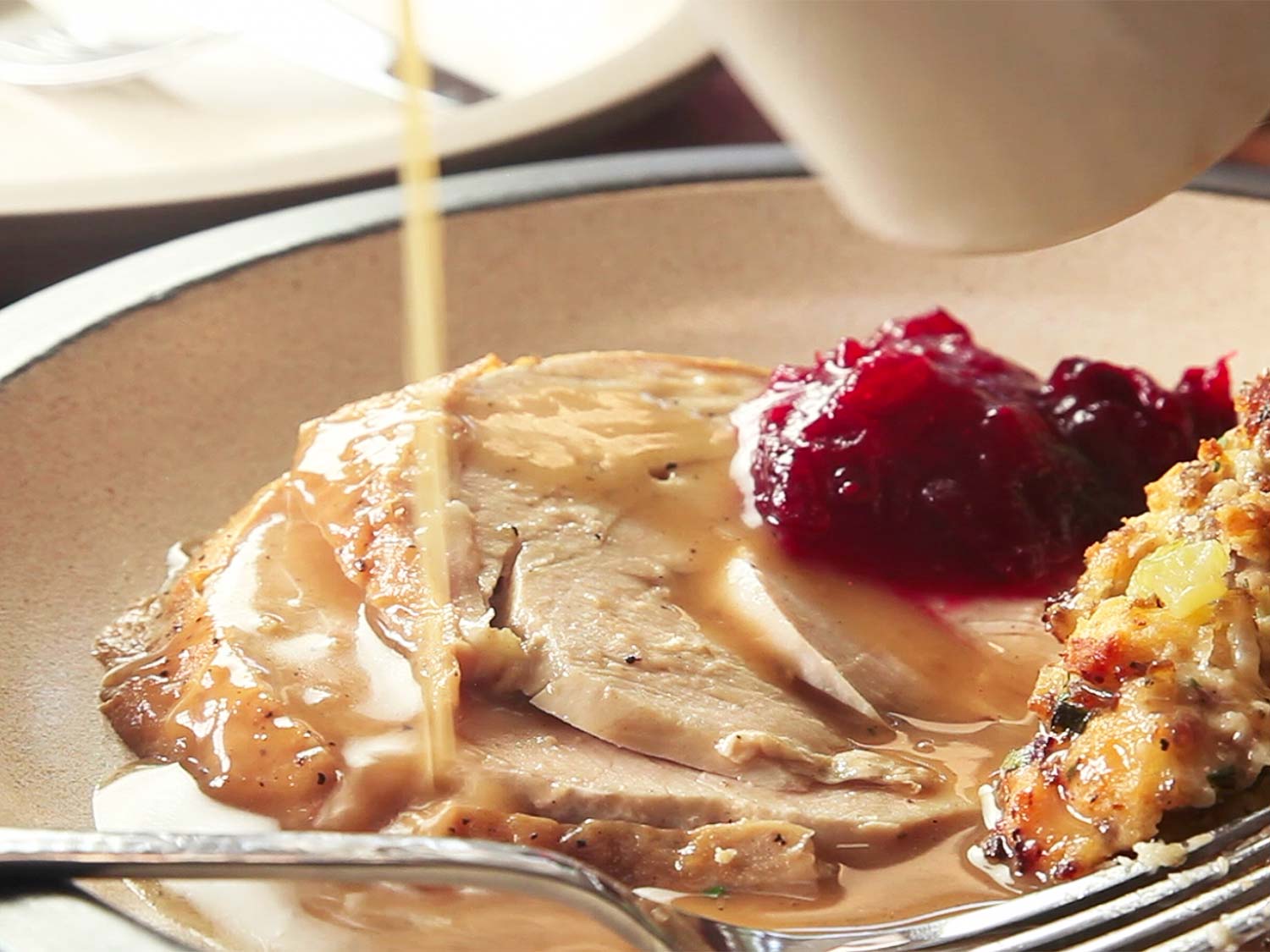
[Photographs: Vicky Wasik]
By far the most difficult thing about cooking a Thanksgiving meal for a crowd is the logistics of getting all the food to the table at its proper serving temperature. With limited space in most home kitchens, it’s a game of musical burners and oven space as serving dishes, pots, and pans rotate on and off the heat and in and out of the oven. The smarter we can be about how we manage our kitchen space, the easier it all becomes.
One of the most flexible components of the meal is the gravy. It needs to be hot and free of a skin on the surface, and there are many ways to accomplish that without tying up a stovetop burner that you’ll definitely need for other things.
Here are some of our favorite ways to hold gravy in perfect serving condition while keeping it out of the way. Come along—it’s time to climb aboard the gravy train and get gravy trained.
Gravy Training Option 1: Use an Insulated Carafe or Thermos
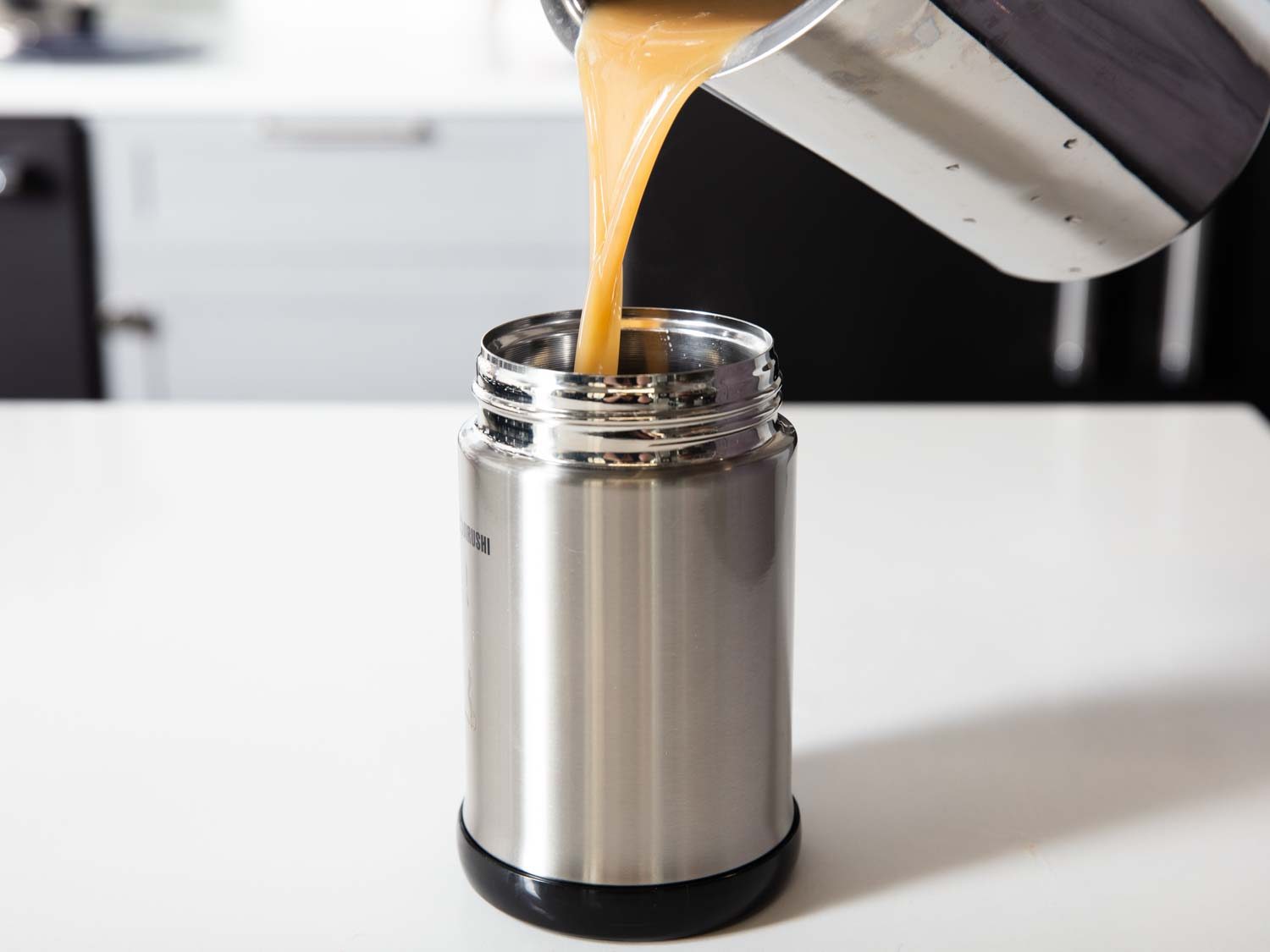
An insulated carafe, often casually referred to using the brand name Thermos even when made by different companies, has a vacuum built into its walls, helping keep hot liquids hot and cold liquids cold. As any coffee drinker who owns a vacuum-insulated travel mug knows, these things can keep fluids tongue-burningly hot for hours without any additional heat input.
To use one for gravy, simply take a few minutes to get your gravy piping hot on the stovetop, and, if you want, preheat the carafe by pouring some boiling water into it (you don’t have to do this, but it’ll give you a slight bump on heat-retention time). Then pour the gravy into the carafe, seal it, and set it aside until ready to serve.
Exactly how long your gravy will stay hot in there is difficult to say, since it can vary based on the brand of carafe and also how full it is (the less full the carafe, the faster the gravy will cool down), but you should be able to safely hold your gravy for at least a couple hours without a major loss in warmth.
Gravy Training Option 2: Hold It Using an Immersion Circulator
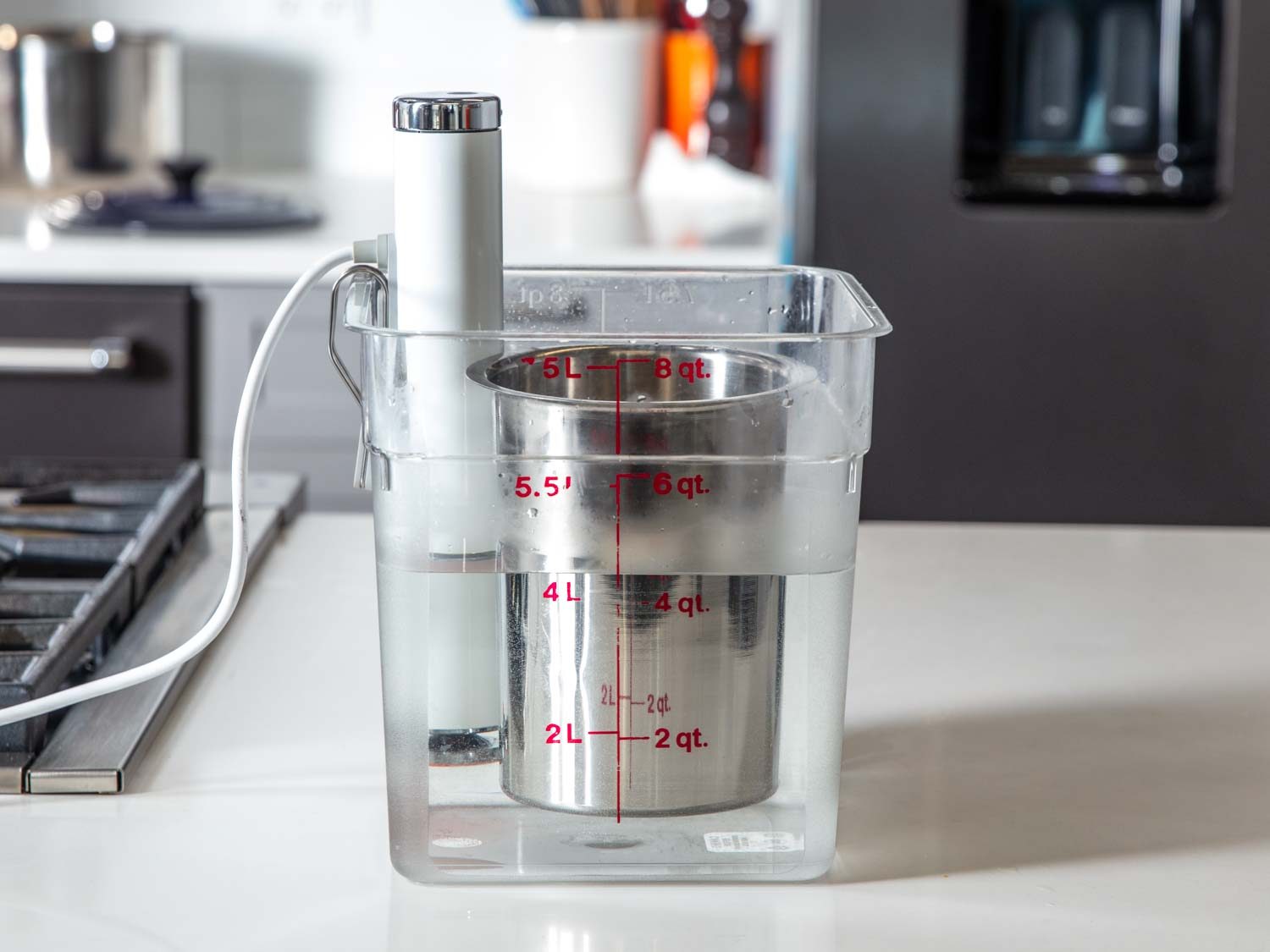
If you own an immersion circulator, you have the perfect device to hold mashed potatoes and gravy warm, no range required. Set the circulator anywhere between 150 and 165°F (65 to 75°C), then fill a mason jar, heatproof swing-top jar with a gasket, or a metal container like a bain-marie with the gravy and set it into the hot-water bath.
If you’re using a sealed vessel like a mason jar, it can be fully submerged without any problem, but open-topped containers obviously can’t sink below the water level; since the vessel will displace the water as it’s submerged, you should lower it slowly, making sure there’s no risk of water overflowing into your gravy.
Gravy in an open-topped container will be at risk of forming a skin. You can prevent this by pressing plastic wrap or a butter wrapper directly against the surface of the gravy.
Gravy Training Option 3: Make a Slow-Cooker Hot-Water Bath
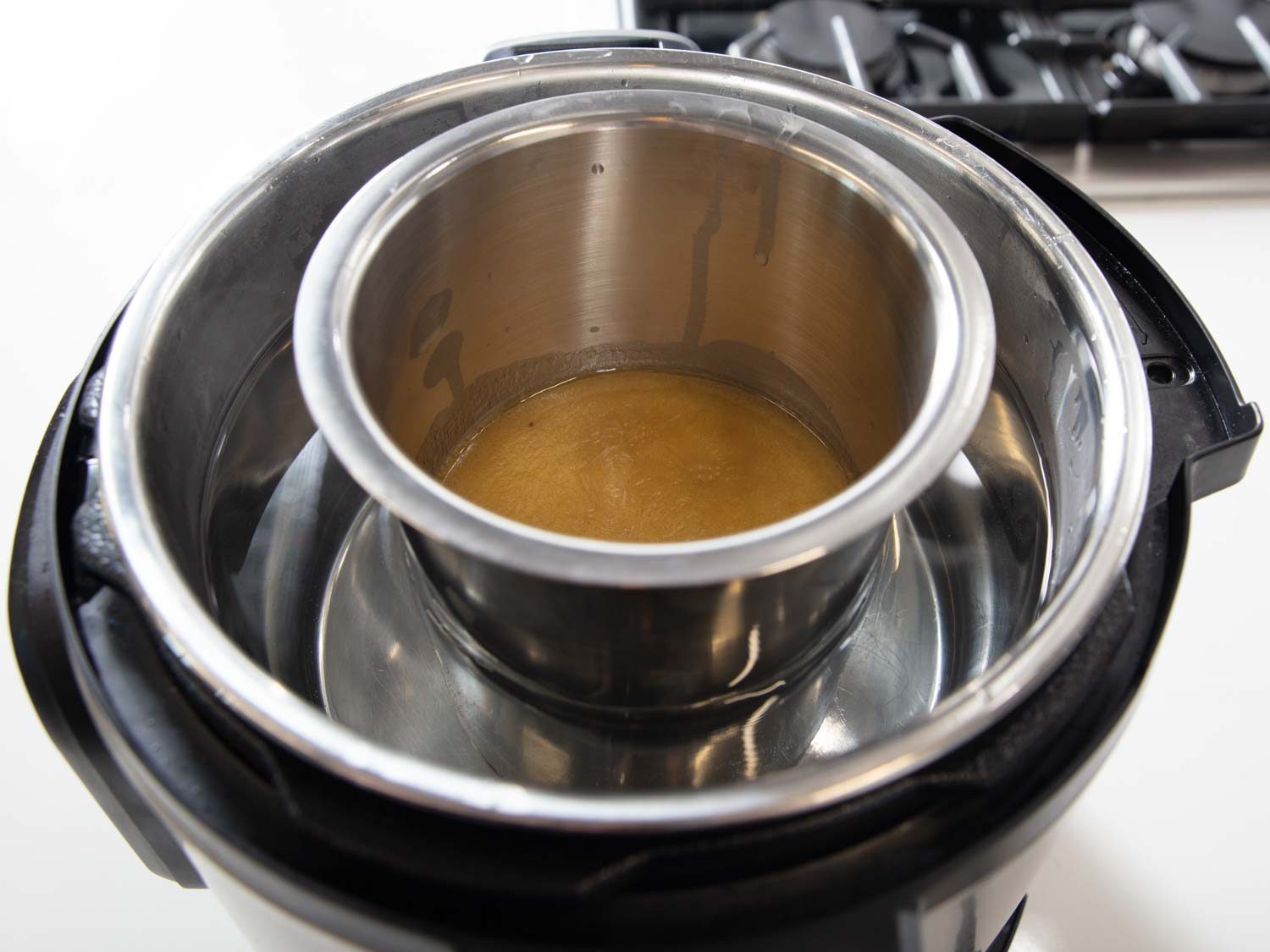
[Photograph: Vicky Wasik]
Even without an immersion circulator, you can still rig up a hot-water bath away from your stove if you own either a slow cooker or a multi-cooker like the Instant Pot. The idea is the same as for the immersion circulator, except you’ll instead fill the cooker’s vessel with water and heat it up (in a multi-cooker, this would be using the slow-cooker setting). Then lower your vessel of gravy into the hot-water bath and leave it until dinnertime.
Just as with the immersion circulator, any vessel that remains open will expose the gravy to air, which could cause a skin to form. Use plastic wrap or a butter wrapper directly against the gravy’s surface to prevent this.
Gravy Training Option 4: Make a French Top
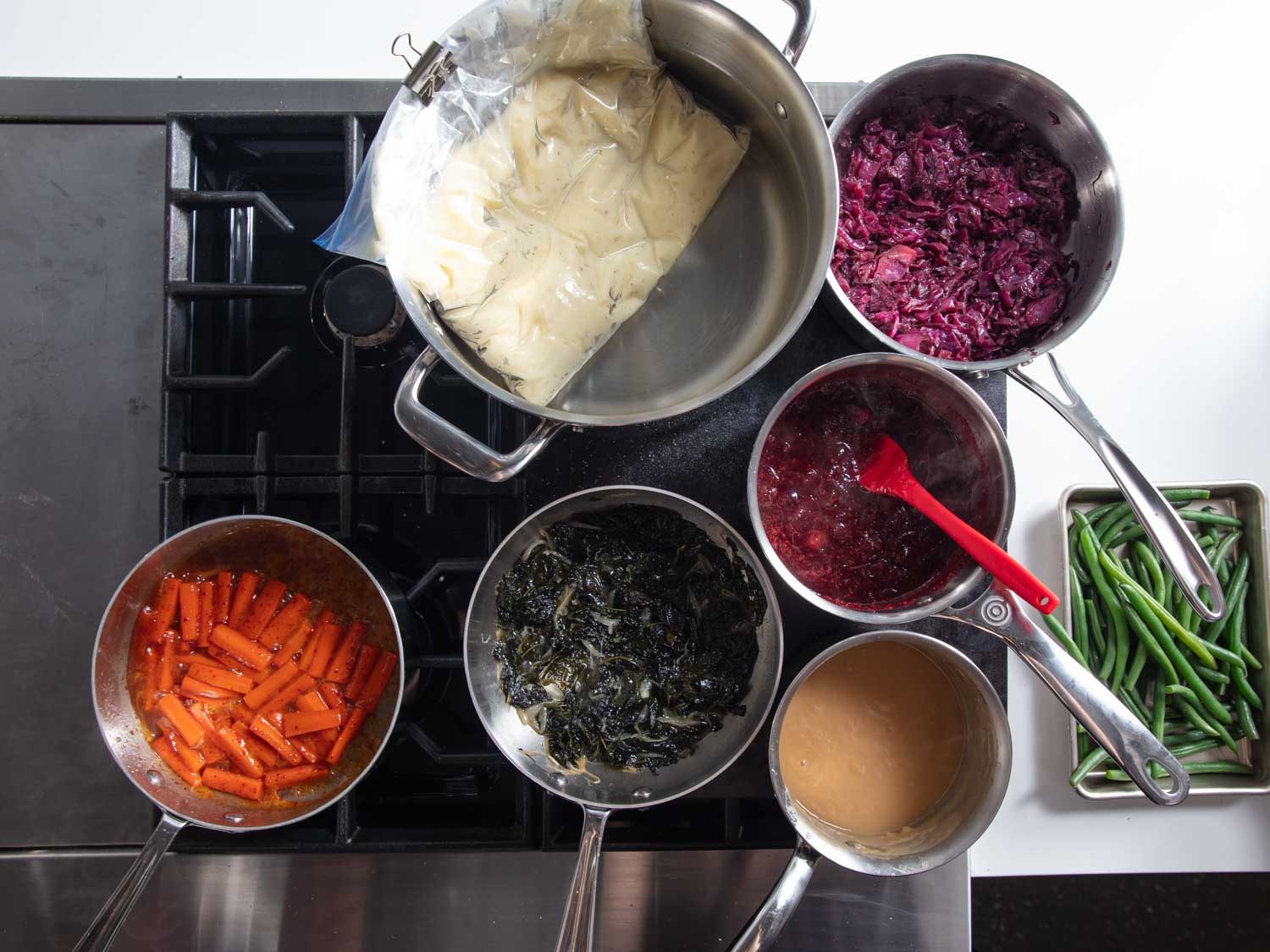
Sasha recently wrote about his clever trick for turning a standard stovetop into what’s known as a French top—a heated metal surface common to restaurants that maximize stovetop space better than individual burners do.
He does this by setting a baking steel or cast iron griddle over two burners. Obviously, this is not a burner-free way to hold your gravy, but as you can see in the above photo, by creating a flat heated slab, you can hold a few more pots and saucepans—including one full of gravy—than the two burners themselves could otherwise accommodate. And by adjusting the heat of each burner, you can make sure your gravy is on a spot that’s just warm enough, but not so hot it’d risk scorching or over-reducing as it sits (still, it’d be a good idea to give it a stir every once in a while).
All products linked here have been independently selected by our editors. We may earn a commission on purchases, as described in our affiliate policy.
Source link